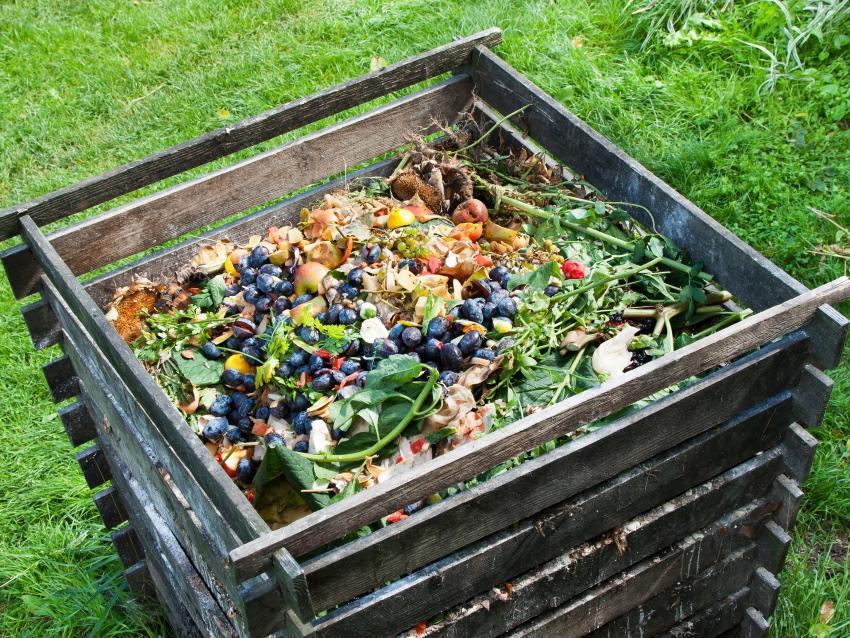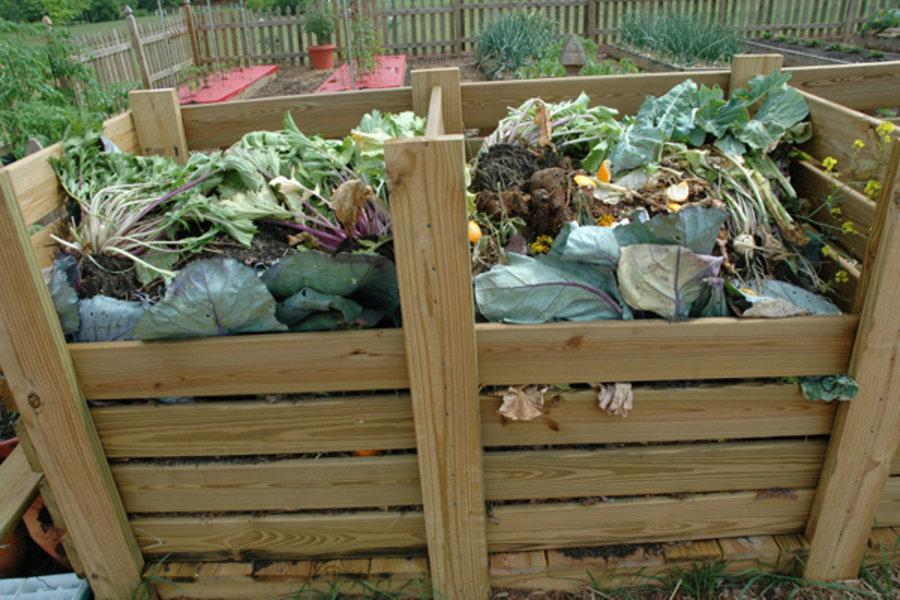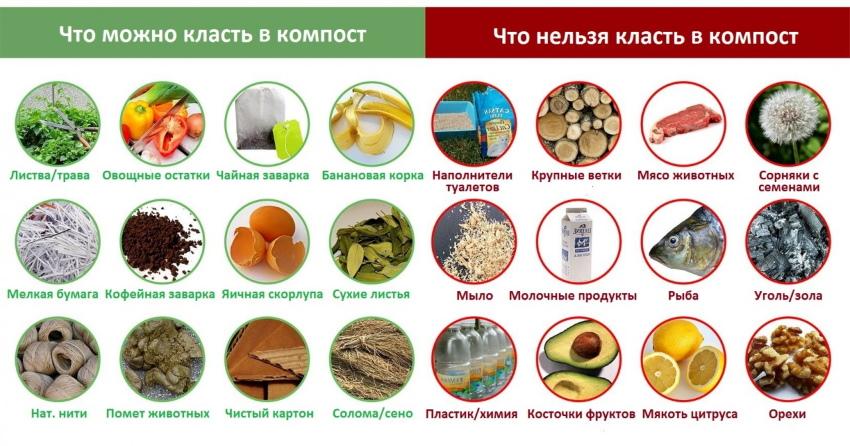What can be put in a compost heap - do it yourself organic fertilizer
 Composting is the ideal solution to help remove food and plant waste while enriching the soil in your area. However, before dumping everything into one pit, it is important to know what to put in the compost heap. Its contents should not only quickly rot, but also turn into a useful mass. Some components will not only be useless, but can have the exact opposite effect. And then instead of valuable organic fertilizer, you just end up with a garbage dump.
Composting is the ideal solution to help remove food and plant waste while enriching the soil in your area. However, before dumping everything into one pit, it is important to know what to put in the compost heap. Its contents should not only quickly rot, but also turn into a useful mass. Some components will not only be useless, but can have the exact opposite effect. And then instead of valuable organic fertilizer, you just end up with a garbage dump.
The compost heap consists of several layers, which must be alternated. Lay boards or large branches at the bottom of the pit - they will serve as a drainage layer and allow excess water to drain. Then alternate between brown and green masses, diluting them with a small layer of soil or manure. The brown mass is solid waste with carbon content, while the green mass is vegetation and food residues with nitrogenous components.
What can be put in a compost heap

Suitable for composting:
- plants (without root system and seed pods);
- foliage;
- small wood without paint;
- tops of garden crops;
- sawdust;
- herbivore manure;
- fruits and vegetables (not treated with poisons);
- food waste (except for meat and milk, which can attract animals);
- tea and coffee brewing;
- eggshell;
- mushrooms, including wormy ones;
- paper towels and napkins.
What waste is not suitable for composting
 Compost is not a garbage dump; you cannot dump everything that remains after cleaning your house, garden and vegetable garden. First of all, its components must quickly decompose or rot. In addition, it is important that they are not infected with diseases or aggressive towards the main participants - worms and beneficial microorganisms.
Compost is not a garbage dump; you cannot dump everything that remains after cleaning your house, garden and vegetable garden. First of all, its components must quickly decompose or rot. In addition, it is important that they are not infected with diseases or aggressive towards the main participants - worms and beneficial microorganisms.
It is categorically impossible to use for laying in a compost heap:
- Any parts of plants affected by disease. Among them are the tops of tomatoes, potatoes, peppers and cucumbers, which can be with late blight... The fungus will infect all compost.
- Weeds with roots and seeds (they then germinate).
- Vegetation treated with pesticides (drugs kill beneficial organisms in the heap).
- Colored dyed fabric or glossy paper (also contains harmful impurities).
- Pet and human feces (may contain worms).
Some plants that kill beneficial microorganisms in the heap. Among them: foxglove, broom, aconite, lilies of the valley, castor oil plant. Also, in order for the compost to be ready in a short time, it is not recommended to use components that slow down decay.
These include:
- too large and hard waste (branches, large bones);
- fresh dry foliage;
- plastic, plastic, synthetics;
- peel of citrus fruits (not only decomposes for a long time, but also harmful to worms).